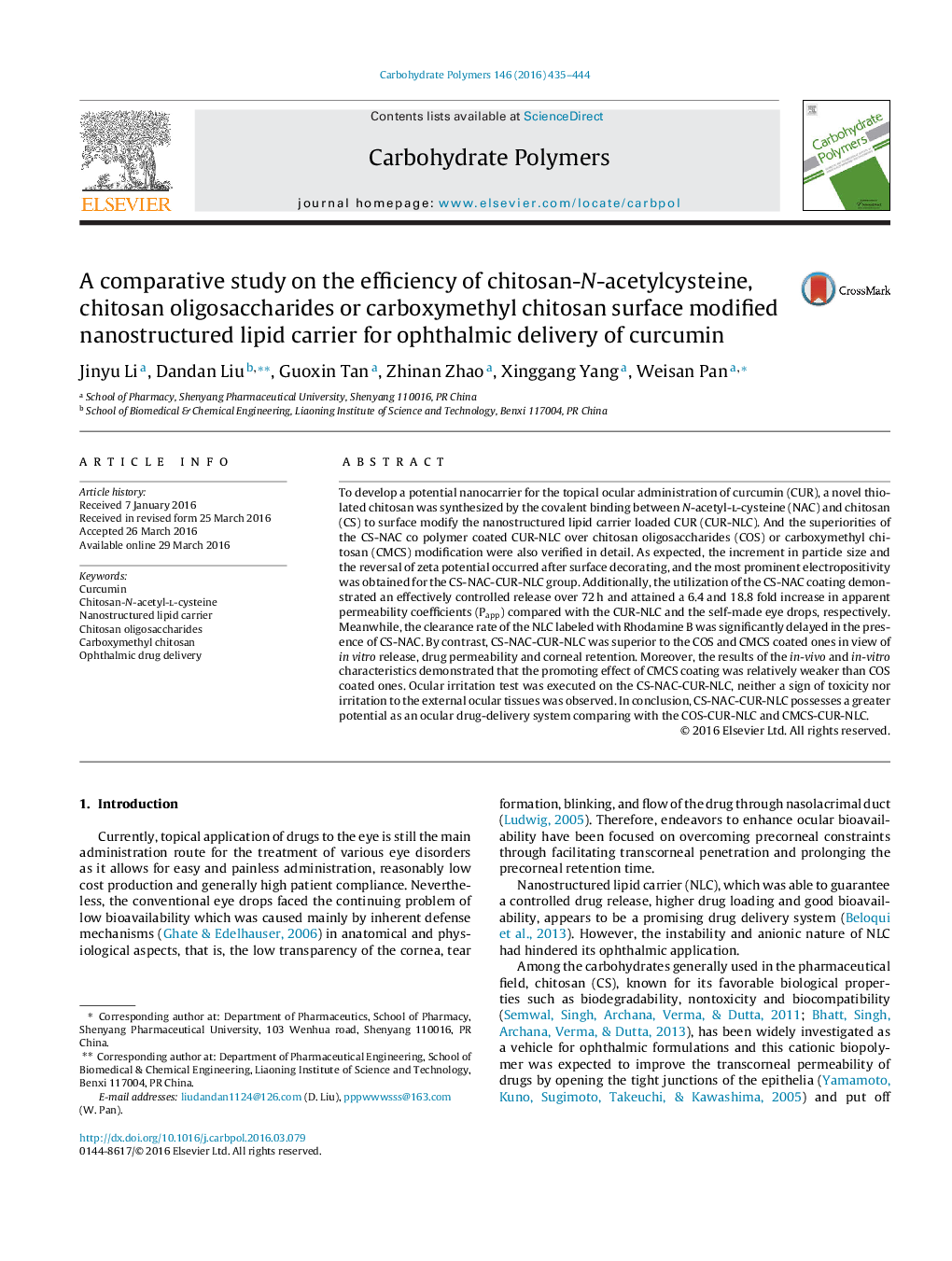| Article ID | Journal | Published Year | Pages | File Type |
|---|---|---|---|---|
| 1373996 | Carbohydrate Polymers | 2016 | 10 Pages |
•A two-step covalent binding between N-acetyl-l-cysteine (NAC) and chitosan (CS) was proposed.•The ophthalmic delivery of curcumin (CUR) was enhanced by elaborating nanostructured lipid carrier (NLC) decorating with CS derivatives.•The CS-NAC-CUR-NLC was superior to chitosan oligosaccharides (COS) or carboxymethyl chitosan (CMCS) modification in ophthalmic delivery.•The superiority in view of: extended release, corneal rention time and permeability through the cornea.•The CS-NAC coated CUR-NLC induced neither a feeling of discomfort nor irritation.
To develop a potential nanocarrier for the topical ocular administration of curcumin (CUR), a novel thiolated chitosan was synthesized by the covalent binding between N-acetyl-l-cysteine (NAC) and chitosan (CS) to surface modify the nanostructured lipid carrier loaded CUR (CUR-NLC). And the superiorities of the CS-NAC co polymer coated CUR-NLC over chitosan oligosaccharides (COS) or carboxymethyl chitosan (CMCS) modification were also verified in detail. As expected, the increment in particle size and the reversal of zeta potential occurred after surface decorating, and the most prominent electropositivity was obtained for the CS-NAC-CUR-NLC group. Additionally, the utilization of the CS-NAC coating demonstrated an effectively controlled release over 72 h and attained a 6.4 and 18.8 fold increase in apparent permeability coefficients (Papp) compared with the CUR-NLC and the self-made eye drops, respectively. Meanwhile, the clearance rate of the NLC labeled with Rhodamine B was significantly delayed in the presence of CS-NAC. By contrast, CS-NAC-CUR-NLC was superior to the COS and CMCS coated ones in view of in vitro release, drug permeability and corneal retention. Moreover, the results of the in-vivo and in-vitro characteristics demonstrated that the promoting effect of CMCS coating was relatively weaker than COS coated ones. Ocular irritation test was executed on the CS-NAC-CUR-NLC, neither a sign of toxicity nor irritation to the external ocular tissues was observed. In conclusion, CS-NAC-CUR-NLC possesses a greater potential as an ocular drug-delivery system comparing with the COS-CUR-NLC and CMCS-CUR-NLC.
